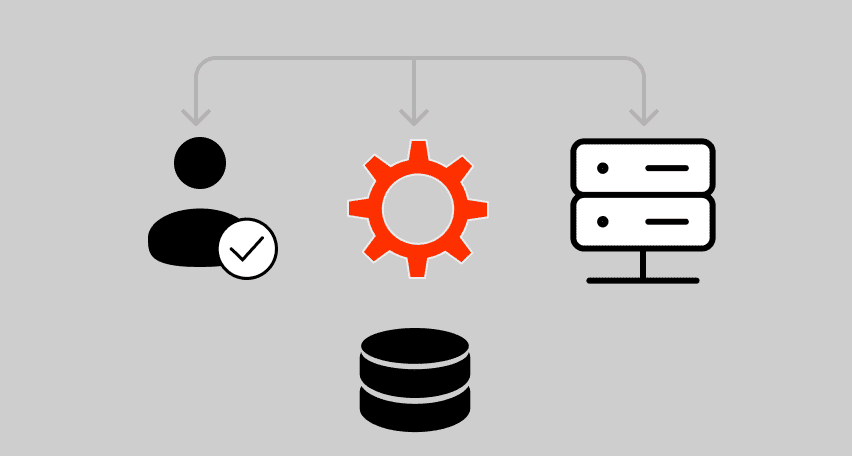Types of Mobile Testing: How to Choose Right for Your App
Mobile devices have transformed from simple communication devices to multifunctional computing machines. One of the greatest drivers behind this transformation has been the advent of smartphones and the subsequent rise of mobile applications. As of Q3 of 2019, there had been 29.6 billion mobile app downloads in Apple and Google app stores.
These applications enable mobile devices to perform countless operations and become an integral part of our daily routine. However, mobile applications need to be fully functional to deliver value to consumers.
At the same time, mobile apps have to stay relevant in a highly-competitive market. Not only is it necessary for developers to deliver error-free mobile software, but they also need to ensure the usability, security, and quality of these applications.
Mobile testing helps mobile app developers maximize the performance of these applications. With that said, mobile testing is not a one step-operation, but rather a procedure of iterative steps that tailor the application according to user requirements.
In this article, we will discuss multiple types of mobile testing and discuss the goals and benefits of each given testing procedure.
Functional Testing
As the name suggests, functional testing is centered on the functionality of a mobile application. Therefore, during functional testing, testers need to evaluate whether the core functions of an application are performing optimally.
Functional Testing Goals
The majority of procedures in functional testing cover components that contribute to the flow of the software and along with its main purpose. For instance, if you are developing a mobile app for an e-commerce app, you will test specific features such as sign up, log in/out, add to cart, payment gateway and other specialized operations. At the same time, it’s necessary to see whether or not the app is launching as intended; graphical components are working properly, and if the application is pushing notifications as it should.
Benefits of Functional Testing
Usability Testing
Most people know usability testing by the term user experience testing. This type of mobile testing evaluates the mobile application in terms of user-friendliness and ease-of-use.
Usability Testing Goals
In usability testing, we evaluate the mobile application through the eyes of the end-user. Therefore, we need app consumers to evaluate the application’s intuitiveness and use their feedback as insights to improve their experience while using the application.
There is no hard-line methodology for this type of testing and QA testers often leverage their understanding of the user needs to see whether the application is up to the mark. Therefore, it’s essential to evaluate the response time of the application, its user-friendliness, as well as its layout and design.
Since the testing procedure can be subjective depending on the tester, it’s ideal to construct feedback forms and test scripts for understanding the preferences of targeted users.
Benefits of Usability Testing
Compatibility Testing
Compatibility testing is the type of mobile app testing that focuses on the non-functional aspects of the application. As the name suggests, the procedure measures the compatibility of mobile apps against specific software, network, and hardware requirements.
Goals of Compatibility Testing
In compatibility testing, we must make that the mobile app works seamlessly across different operating systems, browsers, and hardware makes and models. Therefore, the testing team would see the compatibility of the application across OS such as Android, iOS, and Windows, as well as hardware specifications and changing networks and their parameters.
Benefits of Compatibility Testing
Performance and Load Testing
Performance testing is meant to evaluate how mobile apps function under a particular workload of users. It helps testers ensure that the application doesn’t malfunction during its operation.
Performance and Load Testing Goals
Performance and load testing are directly related to the effect of user load on the performance of the mobile application. Therefore, when we conduct performance and load testing, we try to detect device performance issues as memory and battery consumption by the mobile application as well as the start-up and response time of the application.
At the same time, you can use this mobile app testing type to check the performance of the network and the under a specific user load. Therefore, it should detect issues related to errors and delays during data retrieval and the speed of data transfer.
Benefits of Performance and Load Testing
Security Testing
The level of security in a mobile app is fundamental to its success. Security testing helps developing teams evaluate the authenticity, integrity, and confidentiality of the mobile app.
Goals of Security Testing
The reason why software testers conduct security testing is that they need to identify the potential vulnerabilities and threats a mobile application can have. It’s necessary to resolve these potential security risks to safeguard the personal data of its users.
Therefore, the security testing procedure of mobile apps must be able to detect complex security risks that are not apparent in the source code. Unless you identify the location of these vulnerabilities, there is no use finding them out. This is it’s essential to identify the precise location of these defects during security testing.
Benefits of Security Testing
Installation Testing
Installation testing refers to the testing procedure for evaluating the installation and removal process of the mobile app.
Goals of Installation Testing
Installation of the mobile app is the user’s first encounter with the end product. Therefore, any error during this procedure can discourage the user from using the application. The main objective of installation testing needs to be an uninterrupted and error-free installation of your mobile app. With that said, the procedure should also include the scenarios of when users don’t update a particular application.
Benefits of Installation Testing
Localization Testing
Localization testing refers to the process of evaluating whether the UI or graphical of a mobile app suits the language, culture or device accessibility of a particular region.
Goals of Localization Testing
App users are known to avoid using mobile apps that don’t align with their language and cultural preferences. This can happen when the mobile app fails to translate its content to other languages successfully.
Therefore, localization testing is essential for evaluating whether an application has the ability to translate to multiple languages. Alternatively, the same rule can be applied to the conversion of local currencies in an app and as well as local legal requirements and regulations.
Benefits of Localization Testing
Manual Testing
Manual testing the type of mobile app testing that utilizes human experience to evaluate the functionalities of software systems thoroughly.
Goals of Manual Testing
We can boost the testing process of mobile apps with the help of automated testing procedures. However, it isn’t possible to automate every testing operation. Sometimes, test automation can degrade the thoroughness of the testing procedure and minimize its effectiveness.
In such cases, we need to use manual testing to make sure that the final product operates as intended. Usually, manual testing utilized where test cases are not obvious and it isn’t possible to automate the procedure, and we need to perform complex tests. At the same time, this mobile app testing type can help teams during exploratory testing and physical interface tests.
Benefits of Manual Testing
Automated Testing
Automated testing refers to the testing procedure where testers automate the testing process of mobile apps with the help of scripts.
Goals of Automated Testing
Automated testing is helpful in cases where the testing process is either too complex for human testers or when it is too mundane and tedious. This mobile application testing type is mostly used alongside automated testing and plays a key role in delivering high-quality software.
Automated testing can include the process of designing, maintenance, and construction of effective testing scripts. At the same time, it can also integrate or align existing workflows in a business. Furthermore, we can analyze and resolve noisy tests and extensively review all our test results.
Benefits of Automated Testing
Mobile Testing Service in PFLB
There are several mobile testing types for mobile apps and each one of these methods can have a significant impact on the performance and success of a mobile application. Mobile testing maximizes the performance, capability, and quality of a mobile app while validating its core functions. This is why you need to trust a reliable mobile testing service for the best results.
PFLB is a software testing service that has experience of serving over 500 companies across all domains, from finance and healthcare to retail and technology. With years of experience at their disposal, they can ensure that your mobile application delivers the highest quality and outperforms competing applications. Besides Mobile Application Testing, the company has expertise in other core software testing services, such as Performance Testing, Test Automation, and much more.
Related insights in blog articles
11 API Failure Causes and How To Solve Them

When an API fails, the consequences ripple quickly through the entire system. Transactions stall, integrations break, and frustrated users flood your support channels. Understanding exactly why API failures happen — and how to fix them — is essential for developers and businesses alike. This article examines the most common reasons behind API failures, explores the […]
API Mocking: A Complete Guide

Waiting for APIs to become available or stable can slow down entire projects. API mocking provides a smart way to avoid these roadblocks by simulating real API responses, keeping your teams productive and ensuring smoother integration down the line. In this guide, you’ll discover exactly what API mocking involves, how it differs from using real […]
API Endpoint: A Complete Guide

Modern applications rely heavily on APIs (Application Programming Interfaces) to communicate and exchange data across different systems. At the heart of this interaction lies the API endpoint — a fundamental concept that defines where and how data exchanges happen. This guide explains clearly what an API endpoint is, outlines its importance, and provides practical insights […]
gRPC vs. REST: Detailed Comparison

Choosing between gRPC and REST can feel confusing, especially if you’re trying to figure out the best way for your applications to communicate. This article breaks down the grpc vs rest comparison clearly, without jargon or confusion. You’ll learn exactly what each protocol is, the advantages and disadvantages of each, and understand why gRPC is […]
Be the first one to know
We’ll send you a monthly e-mail with all the useful insights that we will have found and analyzed
People love to read
Explore the most popular articles we’ve written so far
- Top 10 Online Load Testing Tools for 2025 May 19, 2025
- Cloud-based Testing: Key Benefits, Features & Types Dec 5, 2024
- Benefits of Performance Testing for Businesses Sep 4, 2024
- Android vs iOS App Performance Testing: What’s the Difference? Dec 9, 2022
- How to Save Money on Performance Testing? Dec 5, 2022